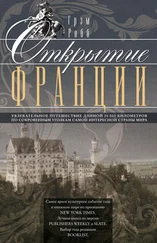5. Sandler B.H., Nikonova L., Leal W.S., Clardy J. Sexual Attraction in the Silkworm Moth: Structure of the Pheromone-Binding-Protein-Bombykol Complex // Chem. Biol., 2000. № 7. Р. 143–151.
6. Mucignat-Caretta C., Caretta A., Cavaggioni A. Acceleration of Puberty Onset in Female Mice by Male Urinary Proteins // J. Physiol., 1995. № 486. Р. 517–522.
7. Mucignat-Caretta . Neurobiology of Chemical Communication; Pelosi P. Odorant-Binding Proteins // Crit. Rev. Biochem. Mol. Biol., 1994. № 29. Р. 199–228; Blomquist G.J., Vogt R.G. (eds.) Insect Pheromone Biochemistry and Molecular Biology: The Biosynthesis and Detection of Pheromones and Plant Volatiles. Elsevier Academic Press, 2003; Pelosi P., Zhou J.J., Ban L.P., Calvello M. Soluble Proteins in Insect Chemical Communication // Cell Mol. Life Sci., 2006. № 63. Р.1658–1676; Leal W.S. Odorant Reception in Insects: Roles of Receptors, Binding Proteins, and Degrading Enzymes // Ann. Rev. Entomol., 2013. № 58. Р. 373–391; Pelosi P., Iovinella I., Felicioli A., Dani F.R. Soluble Proteins of Chemical Communication: An Overview Across Arthropods // Front Physiol., 2014. № 5. Р. 320. doi: 10.3389/fphys.2014.00320. eCollection 2014.
9. Рецепторы, и не только они: от одорантов к эмоциям
1. Buck L., Axel R . A Novel Multigene Family May Encode Odorant Receptors // Cell, № 65. Р. 175–187.
2. С Нобелевскими лекциями Линды Бак и Ричарда Акселя можно ознакомиться по адресам: https://www.nobelprize.org/prizes/medicine/2004/buck/lecture/ и https://www.nobelprize.org/prizes/medicine/2004/axel/lecture/.
3. Sengupta P. Generation and Modulation of Chemosensory Behaviors in C. elegans // Pflugers Arch – Eur. J. Physiol., 2007. № 454. Р. 721–734.
4. За последние несколько лет было опубликовано несколько превосходных исследований ольфакторных рецепторов и трансдукции запахов; большинство из них будут интересны и неспециалистам. См.: Mombaerts P. Molecular Biology of Odorant Receptors in Vertebrates // Ann. Rev. Neurosci., 1999. № 22. Р. 487–509; Menini A. (ed.). The Neurobiology of Olfaction (Frontiers in Neuroscience). CRC Press, 2009; Bargmann C.I. Comparative Chemosensation from Receptors to Ecology // Nature, 2006. № 444. Р. 295–301; Firestein S. How the Olfactory System Makes Sense of Scents // Nature, 2001. № 413. Р. 211–218; Hildebrand J.G., Shepherd G.M. Mechanisms of Olfactory Discrimination: Converging Evidence for Common Principles Across Phyla // Ann. Rev. Neurosci., 1997. № 20. Р. 595–631.
5. Более подробные сведения о вомероназальной системе и ее рецепторах вы найдете в следующих изданиях: Tirindelli R., Mucignat-Caretta C., Ryba N.J. Molecular Aspects of Pheromonal Communication Via the Vomeronasal Organ of Mammals // Trends Neurosci., 1998. № 11. Р. 482–486; Trotier. D. Vomeronasal Organ and Human Pheromones // European Annals of Otorhinolaryngology, Head and Neck Diseases, 2011. № 128. Р. 184–190; Ibarra-Soria X. X., Levitin M.O., Logan D.W. The Genomic Basis of Vomeronasal-mediated Behaviour // Mamm. Genome, 2014. № 25. Р. 75–86.
6. Roberts S.A., Simpson D.M., Armstrong S.D., Davidson A.J., Robertson D.H., McLean L., Beynon R.J., Hurst J.L. Darcin: A Male Pheromone that Stimulates Female Memory and Sexual Attraction to an Individual Male’s Odour // BMC Biology, 2010. № 8. Р. 75.
7. Kinnamon S.C. Neurosensory Transmission Without a Synapse: New Perspectives on Taste Signaling // BMC Biol. 2013. № 11. Р. 42. doi: 10.1186/171–7007–11–42; Temussi P.A. Sweet, Bitter and Umami Receptors: A Complex Relationship // Trends Biochem. Sci., 2009. № 34. Р. 296–302; Bachmanov A.A., Beauchamp G.K. Taste Receptor Genes // Ann. Rev. Nutr., 2007. № 27. Р. 389–414.
8. Parmentier M., Libert F., Schurmans S., Schiffmann S., Lefort A., Eggerickx D., Ledent C., Mollereau C., Gérard C., Perret J., Grootegoed A., Vassart G. Expression of Members of the Putative Olfactory Receptor Gene Family in Mammalian Germ Cells // Nature, 1992. № 355. Р. 453–455.
9. Spehr M., Gisselmann G., Poplawski A., Riffell J.A., Wetzel C.H., Zimmer R.K., Hatt H. Identification of a Testicular Odorant Receptor Mediating Human Sperm Chemotaxis // Science, 2003. № 299. Р. 2054–2058.
10. В нижеследующих работах суммируется большая часть накопленных за последние годы данных о связях между ольфакторными рецепторами и раком: Kang N., Koo J. Olfactory Receptors in Non-chemosensory Tissues // BMB Reports, 2012. № 45. Р. 612–622; Foster S.R., Roura E., Thomas W.G. Extrasensory Perception: Odorant and Taste Receptors Beyond the Nose and Mouth // Pharmacology & Therapeutics, 2014. № 142. Р. 41–61.
11. Busse D., Kudella P., Gruning N.-M., Gisselmann G., Stander S., Luger T., Jacobsen F., Steinstraer L., Paus R., Gkogkolou P., Bohm M., Hatt H., Benecke H. A Synthetic Sandalwood Odorant Induces Wound Healing Processes in Human Keratinocytes via the Olfactory Receptor OR 2AT4 // Journal of Investigative Dermatology, 2014. № 134. Р. 2823–2832.
12. Clyne P.J., Warr C.G., Freeman M.R., Lessing D., Kim J., Carlson J.R. A Novel Family of Divergent Seven-Transmembrane Proteins: Candidate Odorant Receptors in Drosophila // Neuron, 1999. № 22. Р. 327–338; Vosshall L.B., Amrein H., Morozov P.S., Rzhetsky A., Axel R. A Spatial Map of Olfactory Receptor Expression in the Drosophila Antenna // Cell, 1999. № 96. Р. 725–736.
13. Mombaerts P., Wang F., Dulac C., Chao S.K., Nemes A., Mendelsohn M., Edmondson J., Axel R. Visualizing an Olfactory Sensory Map // Cell, 1996. № 87. Р. 675–686.
14. Galizia C.G., Sachse S., Rappert A., Menzel R. The Glomerular Code for Odor Representation is Species Specific in the Honeybee Apis mellifera // Nat. Neurosci., 1999. № 2. Р. 473–478.
10. Наука или магия? Спор о человеческих феромонах
1. Wyatt T. TEDx Talk: Smelly Mystery of Human Pheromones (http://www.ted.com/talks/tristram_wyatt_the_smelly_mystery_of_the_human_pheromone); Doty. The Great Pheromone Myth.
2. Schaal. Pheromones for Newborns // Mucignat-Caretta C. (ed.). Neurobiology of Chemical Communication. CRC Press; 2014. Chapter 17.
11. Цифровое обоняние: распознавание и воспроизведение запахов
1. Persaud K.C., Dodd G. Analysis of Discrimination Mechanisms in the Mammalian Olfactory System Using a Model Nose // Nature, 1982. № 299. Р. 352–355.
2. Persaud K.C., Pelosi P. An Approach to an Artificial Nose // Trans. Amer. Soc. Artif. Int. Organs, 1985. № 31(1). Р. 297–300; Persaud K.C. Biomimetic Olfactory Sensors // IEEE Sensors Journal. 2012. № 12. Р. 3108–3012; Bernabei M., Persaud K.C., Pantalei S., Zampetti E., Beccherelli R. Large-Scale Chemical Sensor Array Testing Biological Olfaction Concepts // IEEE Sensors Journal, 2012. № 12. Р. 3174–3183; Pelosi P., Mastrogiacomo R., Iovinella I., Tuccori E., Persaud K.C. Structure and Biotechnological Applications of Odorant-binding Proteins // Appl. Microbiol. Biotechnol., 2013. № 98. Р. 61–70; Persaud K.C., Pisanelli A.M., Szyszko S., Reichl M., Horner G., Rakow W., Keding H.J., Wessels H. A Smart Gas Sensor for Monitoring Environmental Changes in Closed Systems: Results from the MIR Space Station. Sensors and Actuators B // Chemical, 1999. № 55. Р. 118–126.
Читать дальше
Конец ознакомительного отрывка
Купить книгу
![Паоло Пелоси Обоняние [Увлекательное погружение в науку о запахах] обложка книги](/books/390311/paolo-pelosi-obonyanie-uvlekatelnoe-pogruzhenie-v-cover.webp)










